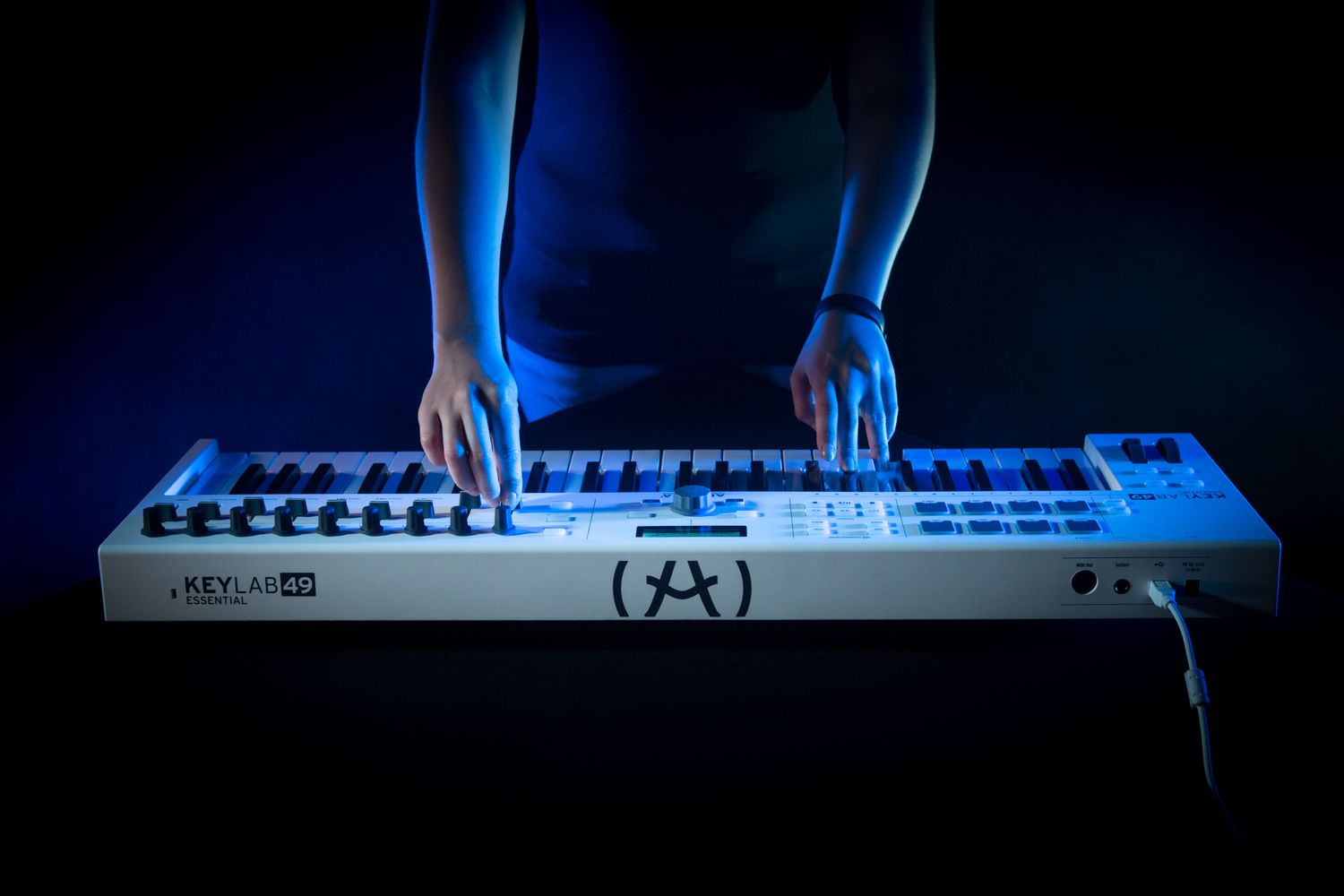
With the KeyLab MkII registered on your Arturia account you'll get access to Analog Lab 3, Piano V, and the MIDI Control Center. Software download, install and licensing is all handled smoothly by the dedicated Arturia Software Center application. However, to take full advantage of the KeyLab MkII you'll want to install the software that comes with it, and get it set up correctly with your DAW of choice. It's a class-compliant USB device, so should start making itself useful as soon as it's plugged in. Unlike a number of its high-end peers, the KeyLab can function without needing a computer to think for it, but in most cases it's probably going to find itself as part of a DAW-centred studio. On the back panel we find CV outputs, MIDI I/O, three quarter-inch aux control ports, expression and sustain pedal inputs, a CV input, and a USB B port. There's also CV connectivity comprising a single CV input, and pitch, gate, and dual mod outputs. Traditional MIDI is connected via a pair of full-size DIN ports. There are no fewer than five pedal/expression control inputs on quarter-inch jacks. Power is via the USB port, although there's an optional DC adaptor.

The right-hand zone sports nine strips of sliders, rotary encoders and buttons.Ĭonnectivity is a strong point.

The main data knob and screen area appears much the same as on the Essential, but is enhanced by three dedicated buttons for switching between Analog Lab, DAW and User modes. I like the low-profile pads, whose multicoloured backlights indicate pressure with brightness. It has a light, fairly shallow action, like the Essential, but with less wobbliness. The keybed is the same 'Pro-Feel' Arturia mechanism with aftertouch as found on the MatrixBrute and MiniBrute 2. The higher-spec metallic wheels appear above or next to the keys depending on whether you have the 49- or 61-key version. The buttons are solid and clicky instead of soft and wobbly.

The MkII is a much sturdier and heavier construction, with a metal main case. There's a strong family resemblance between the KeyLab MkII and Essential, but the MkII is significantly deeper (in fact deeper than most MIDI keyboards) to allow for a 4x4 pad grid and longer faders. The weighted 88-key version is still available with the older first-gen design. The KeyLab MkII comes in as pro or flagship big brother to the Essential, bringing the whole range up to date.

The keyboards all also serve as an integrated hardware front-end for Arturia's Analog Lab: the company's soft synth that consolidates the mighty V Collection into a workstation instrument.īack in February 2018 we reviewed the KeyLab Essential. KeyLab is the family name of Arturia's range of master keyboards that combine stand‑alone MIDI controller functionality with DAW control. Arturia take their KeyLab range to the next level.


 0 kommentar(er)
0 kommentar(er)
